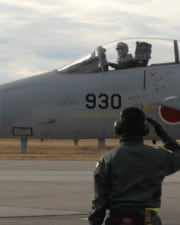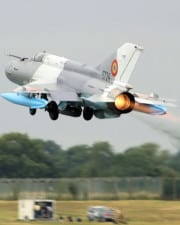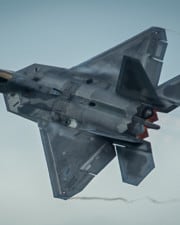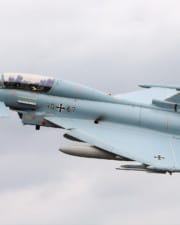Military power projects national prestige. The past few decades have seen China become a global superpower, and so it should come as no surprise that the Chinese military is, by manpower, the largest in the world. China’s military spending is about a third of that of the USA. Today we list some of the best Chinese fighter jets of the People’s Liberation Army Air Force.
Table of Contents
The rise of the People’s Liberation Army Air Force parallels that of the Chinese military over the past century and, indeed, China itself. One hundred years ago, China had no air force, was in the grips of unrest and civil war, and was in total economic, social, and political chaos.
Today, China is a superpower, and the second biggest military spender behind the United States. Though it still lags far behind, $716 billion to $224 billion as of 2019. Even so, China’s considerable military spending has made it a force to be reckoned with, including the PLAAF.
The story of the People’s Liberation Army Air Force also parallels that of Chinese industry and self-sufficiency.
Over the decades, China has moved from purchasing Soviet and Russian jets to making its own. How many fighter jets does China have? That’s hard to answer precisely, given the obvious roadblocks of state secrecy and China’s cool relationship with the West. Estimates are generally somewhere in the thousands.
In developing its own fighter jets China strengthened its sense of national military identity. The fighter jets on this list exemplify that trend.
1. Chengdu J-20
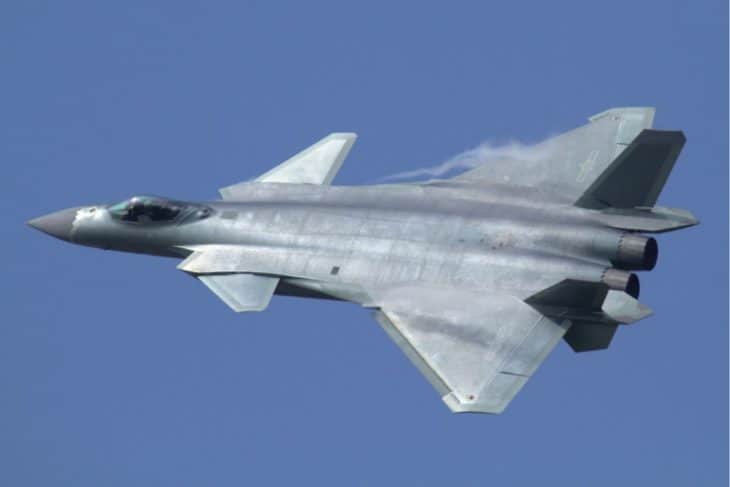
As is the case in the United States, France, Russia, and other countries, a few defense contractors are responsible for most of the jets in the PLAAF. Chengdu is one of the biggest names in Chinese aviation.
The Chengdu-20 is one of the newest fighter jets in the PLAAF. It is a stealth air superiority fighter, and is designed to compete with the F-35 and other American fighter jets.
The plane is, thus, designed with state of the art components, including a Shenyang WS-10B engine. It is designed with stealth capabilities. Other information, such as the type of radar technology used, has not been released by Chinese officials.
More military secrets include the type of electronic systems used onboard, although these are generally assumed to be quite advanced. The total number of jets produced is also a closely-guarded secret.
2. Chengdu J-10

This aircraft is used by both the PLAAF as well as the Chinese Navy. While it is produced by Chengdu, the Russian Siberian Aeronautical Research Institute has previously confirmed that it was involved.
That Russian influence extends to the parts used in the aircraft itself. For example, the J-10 makes use of a Lyulka-Saturn AL-31FN engine, produced by Russia. It was originally intended to have a Chinese engine, the WS-10 Taihang, but problems with this resulted in the adoption of the AL-31FN.
The PLAAF is not the only air force to place an order for the J-10. The Pakistani Air Force has done so as well. At least 40 jets are thought to have been produced for use in their air force.
3. Chengdu J-7

This is yet another example of the PLAAF filling its ranks with Soviet-made fighter jets. The Chengdu J-7 was first produced in 1966 as a Chinese version of the Soviet MiG-21 fighter jet. While these jets have not been produced in years, they remain operational.
The PLAAF has traditionally used these fighter jets for the purposes of deterrence. More than 300 J-7s are thought to remain operational and in various degrees of service in the PLAAF and Chinese Navy.
The J-7 has also seen service with other air forces around the world. Iran and Egypt continue to use them in active service, while other nations such as Myanmar use them for training purposes.
4. Shenyang J-15
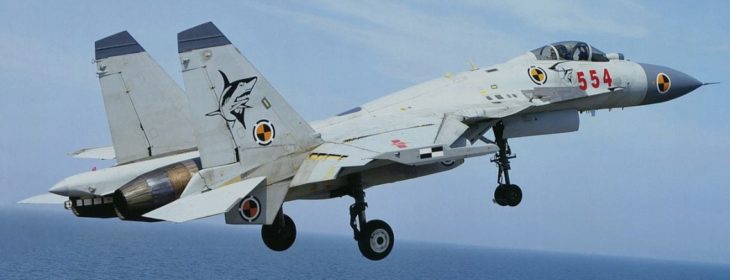
While these aircraft are inspired by the Su-33 Soviet fighter jet, they are nevertheless a Chinese creation. They were first introduced in 2013 and remain in production, with roughly 20 thought to have been built so far.
That said, these are still considered fourth-generation fighter jets. By comparison, the United States’ F-35 as well as the Chinese-made FC-31 described below are fifth generation fighters. Nevertheless, the J-15 is considered to be a top-tier Chinese fighter jet.
This is evidenced by the fact that, in November 2012, Chinese media reported that two J-15 fighter jets successfully landed on the aircraft carrier Liaoning. That said, the J-15 has experienced some difficulties in adverse weather conditions.
5. Shenyang J-11
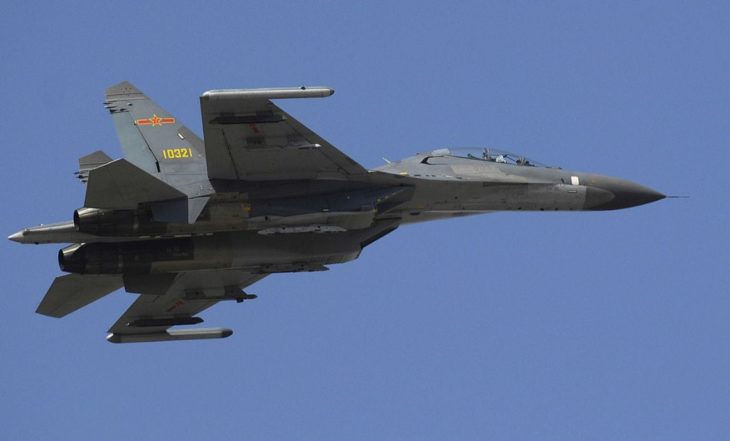
This is yet another Chinese fighter jet to take design cues from the Soviet/Russia Su line, with the Su-27 being the model for the J-11. It is currently employed by both the PLAAF as well as the Chinese Navy.
That said, the J-11 could have been very different, as the original plans called for it to be powered by an engine built by Rolls-Royce. Chinese-built WS-10A engines were also considered. In the end, however, Russian-made Lyulka AL-31F engines were chosen.
This choice seems to have paid off, as the J-11 is capable of hitting Mach 2.1. What’s more, the J-11B variant does indeed use Chinese-built engines, further demonstrating China’s desire to make their fighter jets more homegrown.
6. Shenyang J-8
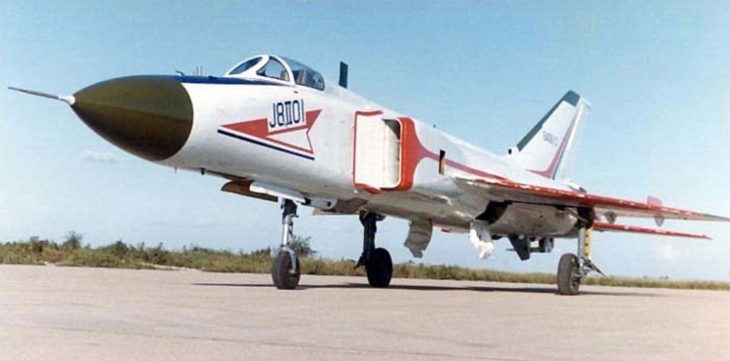
The different variants are a testament to the longevity that China has been able to milk out of some of its fighter jets. While the original J-8 was produced way back in the 60s, the J-8II was produced in 1984 and remains in active service.
Official service numbers for Chinese aircraft can be hard to come by, but it is estimated that around 300 J-8 fighter jets remain in service in the PLAAF, with most or all of those likely being the upgraded J-8II version.
These fighter jets were originally designed to be lightweight interceptors. It is expected that the J-10 and similar fighter jets produced in China will allow them to phase these out in the coming years.
7. Shenyang FC-31
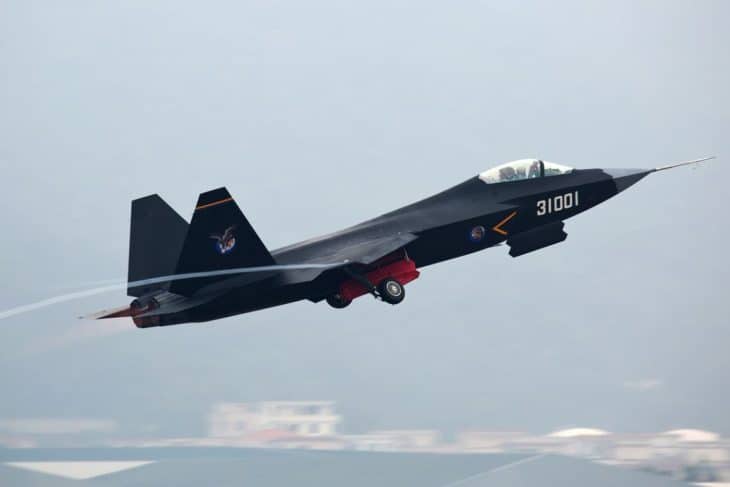
As stated above, this is intended to be China’s answer to the US-made F-35 in the ongoing airborne arms race for fifth-generation fighter jets. It is projected to potentially challenge the US for a market share of the fighter jet market in arms sales.
The United States military views the FC-31 as a credible challenge to the F-35. There is evidence that Japan, South Korea, and other allies in the region do as well, as they have ramped up research into fifth-generation fighters.
That said, some of that progress may have come at the United States’ expense. A report by the Wall Street Journal in 2009 alleged that espionage on the part of the Chinese may have enabled them to obtain secrets about the F-35.
8. Sukhoi Su-30MKK

The Soviet/Russian Su series has long been seen as a rival to American air power, with the Su-30MKK being a contemporary to the F-15E Strike Eagle. This, as well as the MK2, have been bought for use by the PLAAF.
It began production in 2000 and remains in service in both the Russian Air Force as well as the PLAAF, with the latter leading efforts to modernize it and keep it viable for the future.
The craft is currently in service with the Chinese Navy as well as the PLAAF. It is a highly maneuverable and swift fighter jet with the capability of reaching Mach 2.
9. Sukhoi Su-35
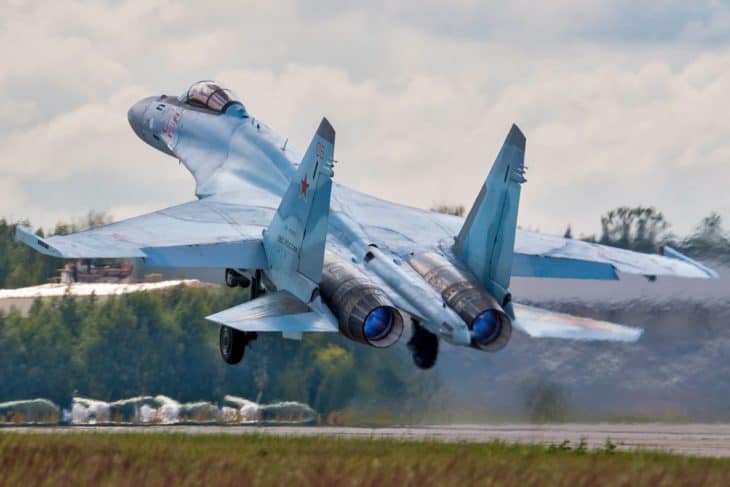
The Su series was a staple of the Soviet Air Force, and that legacy has continued with the Russian Federation. Communist China under Mao purchased Su fighters from the USSR, and that tradition has also continued.
The dissolution of the Soviet Union actually played a role in the production history of this fighter jet, because in its Su-27 variation, it was not mass produced due to the political fallout.
Even so, China did buy the revamped Su-35s. A point of contention between China and Russia has to do with the ownership of the intellectual property rights relating to these revamped models.
10. Sukhoi Su-27

As mentioned above, this was a fighter jet produced in the final years of the Soviet Union. While its sale abroad was limited, China nevertheless bought some for use in the PLAAF.
As with previous aircraft, this too was designed to be a direct competitor to those produced by the United States Air Force. The Su-27 was designed to compete with the F-14 Tomcat.
In another example of the close links between Soviet/Russian and Chinese military aviation, the aforementioned Shenyang J-11 was designed with the Su-27 in mind under a Chinese license. One hundred such jets were made.
11. Nanchang J-12

Let’s finish by taking a look at one of the first major attempts by China to create an indigenous fighter jet. As demonstrated above, for decades China was hugely dependent on orders from the Soviet Union to fill the ranks of the PLAAF.
By the time the supersonic fighter was built in 1970, China was going through massive change, shifting from the early generations under Mao to newer government policies and social expectations.
The J-12 helped mark that shift. Produced during the Cultural Revolution, it marked a break with China’s old military methods and a step toward a future with more indigenous production.
Only a handful were ever built, and they were only ever used for test flights, but the J-12 nevertheless marked a vital transition point in China’s aviation history.
Related Posts



